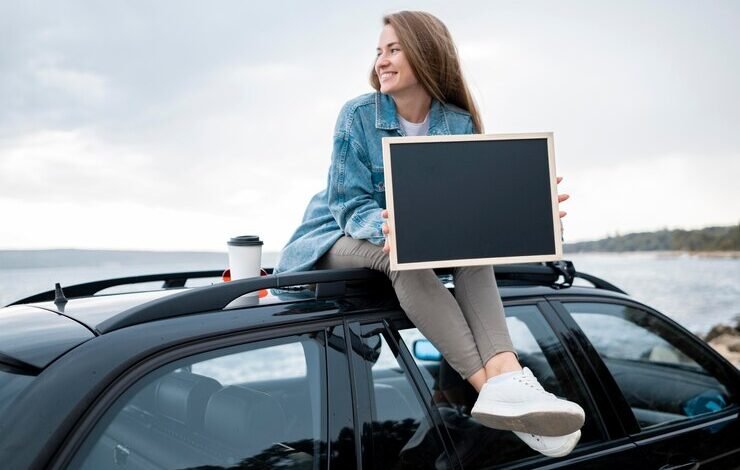Perfecting Stunning Car Photos: Best Camera Settings

Mastering the Shot: Best Camera Settings for Capturing Stunning Car Photos
Car photography is an art form that celebrates the beauty, power, and design of automobiles. Whether you’re a seasoned professional or a passionate enthusiast, capturing that perfect car shot requires more than just pointing your camera and clicking. The best camera settings for car photography play a crucial role in achieving stunning results.
The Three Pillars: Aperture, Shutter Speed, and ISO
Understanding the interplay between these three settings is the foundation for mastering car photography. Let’s delve into each one:
Aperture (f-stop)
Aperture refers to the opening of your lens, controlling the amount of light that reaches the sensor. A wider aperture (lower f-stop number, like f/2.8) lets in more light, creating a shallow depth of field. This blurs the background, drawing focus sharply onto the car, a popular technique in car photography. Conversely, a narrower aperture (higher f-stop number, like f/11) lets in less light but keeps both the car and the background in focus.
Shutter Speed
Shutter speed determines how long the camera’s sensor is exposed to light. A faster shutter speed (like 1/250th of a second) freezes motion, ideal for capturing sharp images of a stationary car. However, in low-light situations, you might need a slower shutter speed (like 1/4th of a second) to let in more light, but this risks motion blur if the car or camera shakes.
ISO
ISO measures the camera sensor’s sensitivity to light. A lower ISO (like ISO 100) produces cleaner images with minimal grain, but requires sufficient lighting. In darker environments, you might need a higher ISO (like ISO 800) to brighten the image, but this can introduce unwanted grain or noise.
Choosing the Best Camera Settings for Car Photography
The best camera settings for car photography depend on the specific situation and desired effect. Here’s a breakdown for common scenarios:
Shooting a Parked Car in Bright Light
- Aperture: f/8 or higher for a sharp image with the entire car and background in focus. Experiment with a wider aperture (f/5.6) for a slightly blurred background if desired.
- Shutter Speed: 1/125th of a second or faster to ensure a crisp image. Adjust based on lighting conditions.
- ISO: 100 for optimal image quality with minimal grain.
Shooting a Parked Car in Low Light
- Aperture: f/2.8 or wider to let in more light.
- Shutter Speed: Experiment to find the right balance between capturing light and avoiding blur. A tripod is highly recommended for slow shutter speeds.
- ISO: Increase ISO gradually, starting at 400 and pushing it higher if necessary, while keeping an eye on grain levels.
Capturing Motion Blur for a Dynamic Effect (Rolling Shots)
- Aperture: f/8 or higher to maintain sharpness on the car.
- Shutter Speed: Use a shutter speed that roughly matches the car’s speed in miles per hour (e.g., 50 mph car = 1/50th of a second shutter speed). This creates a sense of motion blur in the background while keeping the car relatively sharp.
- ISO: Adjust ISO based on lighting conditions, keeping it as low as possible while maintaining a proper exposure. Conversely, a narrower aperture (higher f-stop number, like f/11) lets in less light but keeps both the car and the background in focus.
Pro Tips for Taking Breathtaking Car Photos
- Lighting is Key: Natural, diffused light is ideal for car photography. Avoid harsh midday sun which can create harsh shadows. Early mornings or golden hour (just before sunset) often offer the most flattering light.
- Composition is Crucial: Think about the car’s placement in the frame. Use the rule of thirds or leading lines to create a visually engaging composition. Experiment with different angles, like low shots to emphasize the car’s power or high angles for a dramatic effect.
- Focus on Details: Capture close-up shots of unique design elements like headlights, taillights, or intricate wheels. Use a shallow depth of field to make these details stand out.
- Post-Processing Magic: Edit your photos to enhance colors, adjust contrast, and remove minor imperfections. However, avoid overdoing it and maintain a natural look.
A Special Touch with Motorcut
For car enthusiasts who demand the very best, consider the innovative Motorcut camera accessories. Their high-quality polarizing filters significantly reduce glare and reflections on car surfaces, ensuring vibrant and true-to-life colors in your photos. Additionally, Motorcut offers lens hoods that minimize lens flare and stray light, leading to sharper and cleaner car images.
Conclusion
Mastering the best camera settings for car photography takes practice and experimentation. By understanding aperture, shutter speed, and ISO, you can unlock the potential of your camera and capture stunning car photos that showcase the beauty and personality of these machines. Remember, the best settings depend on the situation and desired effect. Don’t be afraid to experiment and have fun in the process! Experiment with different angles, like low shots to emphasize the car’s power or high angles for a dramatic effect.
FAQ
Q: What camera do I need for car photography?
A: Any camera with manual controls will allow you to adjust aperture, shutter speed, and ISO. While a high-end DSLR or mirrorless camera offers more flexibility, you can achieve great results with a good quality point-and-shoot camera as well.
Q: Is a tripod necessary for car photography?
A: A tripod is highly beneficial, especially in low-light situations or when using slow shutter speeds for creative motion blur effects. It ensures your camera stays perfectly still, preventing blurry images.
Q: What editing software should I use for car photos?
A: There are many great options available, such as Adobe Photoshop Lightroom or GIMP (free and open-source). Even basic editing software can enhance your photos by adjusting colors, contrast, and cropping.
Q: Where can I find inspiration for car photography?
A: Look online at photography websites and social media platforms like Instagram. Many car enthusiasts and professional photographers share their work, offering valuable inspiration and learning opportunities.
By following these tips and exploring the world of car photography, you’ll be well on your way to capturing captivating images that celebrate the love for automobiles.



